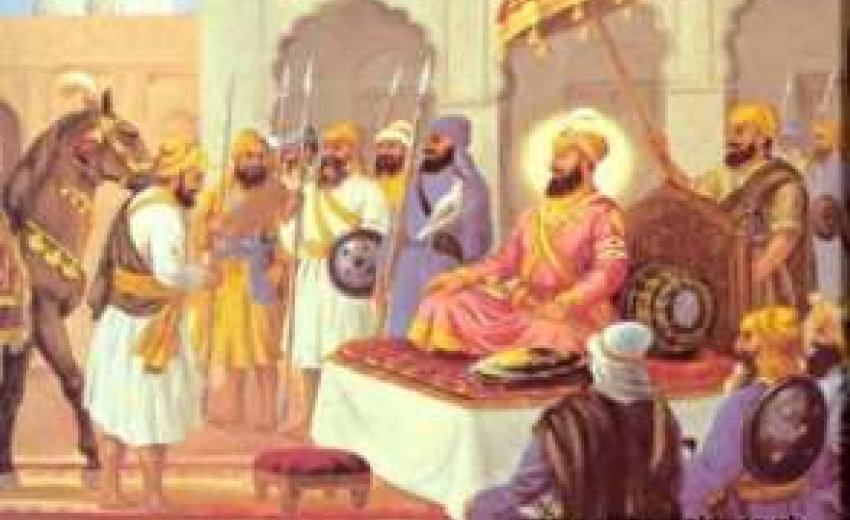In the court of the Tenth Guru, Guru Gobind Singh, ushered in a new approach to
literature, not only with regard to the understanding of the Sikh scripture Guru
Granth Sahib, but the idea of comparative religion. The courtly arenas of
Anandpur and Paonta provided conditions for poets and scribes to flourish in
their respective fields.
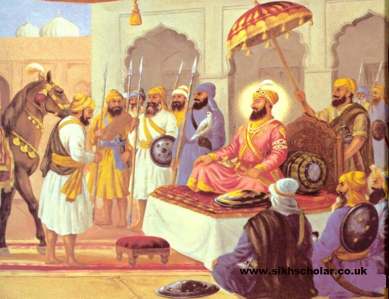
The Tenth Guru of the Sikhs, Guru Gobind Singh (1666-1708), was born in Patna,
Bihar. He was educated and instructed in numerous arts, from the way of the
warrior to the knowledge of several languages. These languages included Punjabi,
Braj Bhasha, Sanskrit, Persian and Arabic. This early understanding of languages
enabled the Guru to impart this knowledge to his Sikhs and the Khalsa.
Guru Gobind Singh inherited a Durbar (court) of poets from his father Guru Tegh Bahadur (1621-1675). It was own vision however, which led him to create courtly arenas, where he served as the Tenth Guru. This included the locations of Anandpur and Paonta Sahib. While some of the works were created in and around Punjab, others were completed at Hazur Sahib in Nanded. The Guru created the conditions for poets, scribes, artisans and musicians to flock to these Durbars. Some of these individuals came to the see the Guru and as a result stayed within the arenas.
Others were already creating literature for the Mughal Emperor Aurangzeb but with impending conversions to Islam they escaped to the welcoming Durbar of the Guru. The literature that was created transcended the different religions of the time with translations of both Hindu and Muslim religious texts. There were also other themes that were covered from statecraft to love poetry.
The Tenth Guru and the Sikh tradition
Guru Gobind Singh improved the manuscript tradition by ensuring that the Sikh
corpus of the Granths maintained its validity and importance. History narrates that
the finalisation of the Guru Granth Sahib was one of his most important tasks. The
scribes who created manuscripts of Guru Granth Sahib also worked on his
compositions, which culminated into the Dasam Patshah Ka Granth (Granth of the
Tenth King). As a result we see several devotees of the Guru including Bhai Mani
Singh and Baba Deep Singh having manuscripts of both Granths attributed to them.
Also, scribes like Bhai Hardas were employed in creating manuscript copies of the
Sikh Scriptures. Another scripture created during the period of the Tenth Guru is theSri Sarbloh Granth (Granth of all-steel); this again is traditionally attributed to Guru
Gobind Singh.
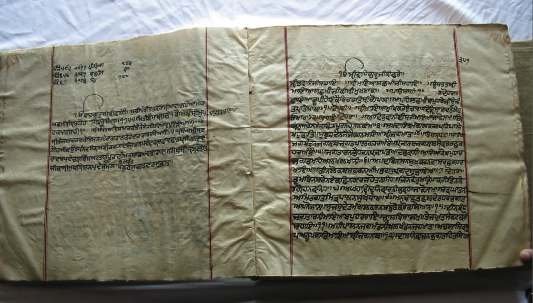
Fig.1 Sri Sarbloh Granth dated 1698 A.D.
Early Sikh manuscript tradition shows manuscripts were created bearing Mughal
influence. This started to change during the Durbars of the Tenth Guru as many
poets and scribes from different religious persuasions brought their own style to the
court.
The poets of the Durbar.
We can establish who the poets of the Durbar were by considering Sikh literature and examining extant manuscripts attributed to the poets. We shall consider some of the works which focus on the Sikh tradition. One of these works is the Sri Gursobha Granth (Praise of the Guru) dated 1701 attributed to Kavi Sainapat. The poet who came from Amritsar was steeped in the Sikh tradition and his works narrate the battle strategies and wars of the Tenth Guru. The work is an extension of theBachitra Natak (Cosmic drama) of Guru Gobind Singh, which shows how the poetic style of the Guru was continually developed by his poets.
Das Gur Katha (Story of the Ten Gurus) dated C.1700 by Kavi Kankan is a relatively
unknown work and was only brought to the notice of scholars after its discovery in
Lahore. It is not clear whether the original is still extant but a copy resides at Khalsa
College in Amritsar. The language is a mixture of Braj Bhasha and Punjabi. The
theme of the work is a short history of the Ten Gurus from Guru Nanak to Guru
Gobind Singh. The Kavi refers to the succession of the Gurus. Elaborate descriptions
of Guru Hargobind in battle as well as reference to the concept of Miri-Piri are
outlined. The creation of the Khalsa is also referred to by Kankan. This manuscript
references the Bani of the Tenth Guru as well as containing a rare Rahitnama (Code
of conduct).
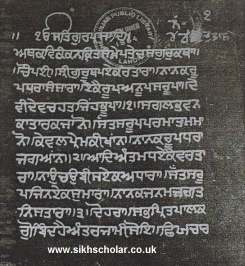
Fig. 2 Das Gur Katha dated c 1700 A.D.
Bhai Nand Lal has an interesting history related to the Tenth Guru. He is said to
have been a poet in the retinue of the Emperor Aurangzeb. He fled the court after
impending conversion to Islam. Nand Lal was received warmly at the court of the
Guru and eventually in Sikh tradition he has been regarded as the Poet Laureate of
the Tenth Guru. Many of his works were written in Persian. His works have been
given the approval of recitation in Gurdwaras.
One of his works is a Rahitnama referred to as Tankhanama or recently renamed as
the Nashitnama (manual of instructions) after the discovery of an early eighteenth
century manuscript.
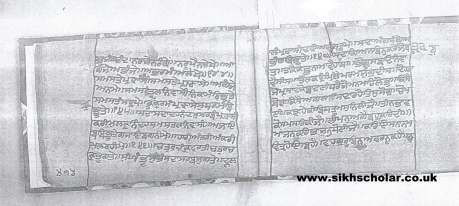
Fig 3. End folio of Jaap Sahib and start of Nashitnama dated c.1718 A.D.
The Nashitnama is a question and answer dialogue between Guru Gobind Singh and
Bhai Nand Lal. Numerous answers are given regarding the code of conduct that a
Sikh should follow. MS440 manuscript dated c.1718-1719 (Guru Nanak Dev
University Library, Amritsar) is not the original text and this can clearly be seen in
Fig 3. as the composition Jaap Sahib finishes and the text breaks off and where theNashitnama starts. The composition begins part of the way through the text and
without the invocations which usually come at the start. This means that the MS440
manuscript is a copy of an earlier text. The Rahtinama can be placed within the time
period of the Tenth Guru.
Other works pertaining to the Sikh tradition include the Prem Sumarag Granth (Good path to love) by an unnamed author, Parchian Patishai Dasvin Ki (Introductions to the Tenth King) by Seva Das Udasi and also a number of Janamsakhis (birth stories) which are hagiographical accounts of Guru Nanak.
The number of those who are considered to be Durbari poets has been reduced over time and now numbers fifty-two, however if we take into consideration relevant manuscripts and other anecdotes the true figure is over one hundred and twentyfive. Many of the compositions bear the poets name written within the text or colophon. The poets would present their compositions to the Guru on completion and as a result they would be paid handsomely for their creations. Within the poetry we find the authors praising Guru Gobind Singh and this is a common feature of the Court poetry of Ani Rai, Mangal Rai, Chand, Brind, and Kuvresh. Some poets also start their renditions by praising Gods and Goddesses, whereas in contrast the Tenth
Guru praises Akal Purakh. An example of this occurs within the invocations to Sri Ganesh appearing in some of the poet's translations, this includes Adhiyatam Prakash (The dawn of Spiritual knowledge) by Kavi Sukhdev.
Many parts of the epic Mahabharata were translated in the Durbar. A manuscript
written by Kavi Tahkan (Chopra) of Jalapur, dated 1669, also made its way into the
court of the Tenth Guru. It is unclear whether the Tenth Guru met Tahkan but his
work was acknowledged in the Durbar as a Gurmukhi translation made by the scribe
Balgovind Fateh Chand (Sikh Reference Library, Amritsar No. 5026). This work by
Tahkan known as Asvamedha Parva centres around the horse sacrifice (asvamedha)
carried out by the victorious Pandava leader Yudhisthira.
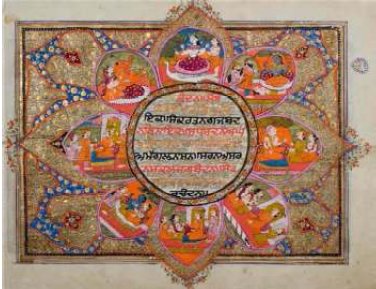
Fig. 4 A later rendition of the Asvamedha Parva c. 1820-40.
The combined legacy of the Guru and the poets was the creation and compilation
known as the Vidiya Sagar Granth (The book of the ocean of knowledge). Sikh
literature like Bansavlinama Dasan Patshahian Ka (Genealogy of the Ten Kings) by
Keshar Singh Chibbar, completed in 1769 A.D. and Sarup Das Bhalla in his Mahima
Parkash (Light of the Glory) completed in 1776 A.D make reference to a collection of
the poet's works. Tradition notes that the manuscript weighed more than 250
kilograms. In the evacuation of Anandpur Sahib in 1704, the forces of the Guru were
engaged in a battle with the Mughals and as a result this manuscript was said to
have been lost in the Sirsa River. However, recent research now tells us that some
of the compositions survived and can be found amongst private collections and
certain libraries in the Punjab.
The rich legacy of the Durbar of Guru Gobind Singh merits further study and is one which will enrich the culture not only of the Sikhs, but can also shed light on the diverse literature of India.
© 2012 Article courtesy of www.gsmann.com
Written for www.bhainandlal.com
Further Reading:
- Fenech, Louis, The Darbar of the Sikh Gurus: The Court of God in the World of Men, USA: OUP, 2008.
- Mann, Gurinder Singh, Ramgharia Dynasty: Bhai Hardas and Jassa Singh Ramgharia, visit www.scholar.co.uk.
- Mann, Gurinder Singh, Historical sources on Guru Granth Sahib and Sri Dasam Granth, visit www.scholar.co.uk.
- Mann, Gurinder Singh and Singh, Kamalroop, Sri Dasam Granth Sahib: Questions and Answers, London: Archimedes Press, 2011.
- Mcleod, W.H, Sikhs of the Khalsa: A History of the Khalsa Rahit, India: OUP, 2004.
- Padam, Piara, Sri Guru Gobind Singh Ji De Darbari Ratan, Patiala: Author, 1976.
About the Author
Gurinder Singh Mann is Author and historian from Leicester, UK. He has worked on the writings of Guru Gobind Singh for over 15 years. He has also delivered lectures on different themes related to Sikh history around the world. He has recently released the widely acclaimed book: Sri Dasam Granth: Questions and Answers. He is currently working on other publications including: The Granth of Guru Gobind Singh and British and the Sikhs.

